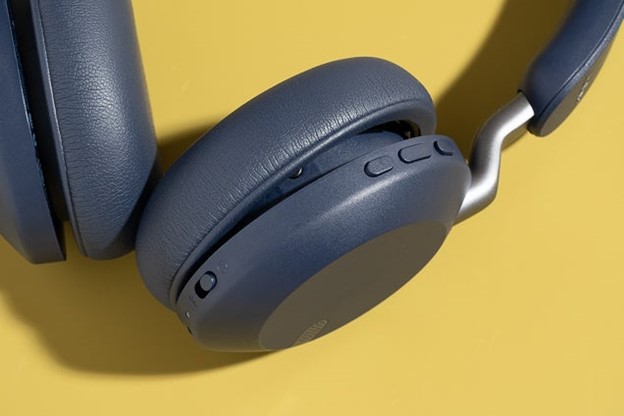Over the past two years, I have tried Bluetooth headphones from different manufacturers, many of which often let me down. Most, of course, I liked: comfortable, high-quality, with good sound. In others, it was impossible to go to training, as they always fell out, or simply did not suit the sound. Here is a guide that I used to choose wireless headphones.
Table of Contents
What are wireless headphones?
Wireless headphones are devices that work on the technology of receiving sound from a source. They do not have a cord and are connected to the source mainly via the earbuds Bluetooth. There are several types of accessories that differ in sound transmission technologies:
- Radio headphones are connected via radio frequency channels. The advantage is that the signal quality here is not affected by obstacles in the form of walls and furniture. So, you can listen to a TV show while moving freely around the house. However, the sound can be affected by running electrical appliances, especially those with electric motors.
- Infrared models that connect via an infrared channel. The device works only if the transmitter is in line of sight.
- Bluetooth headphones are universal. Bluetooth connection, it is possible to connect to different sources and switch them.
- Wi-Fi headphones. Connecting involves connecting multiple users to the same source.
You need to choose accessories based on the purpose of use. If you need devices to listen to music while working out in the gym, then they may be suitable for walking, but not for playing DotA.
How to choose headphones?
There are a huge number of accessories designed for different purposes: watching TV, playing sports, working with a phone and a computer, for a metal detector, etc. I will tell you my principles by which I choose accessories and wireless headphones you choose – decide for yourself.
Headphones for sports
Models for running or doing exercises should be compact and comfortable – this is the main thing. They should not fall out of the ears, be large. Wireless headphones for sports should have the main advantage – moisture resistance. You need to choose the shape of the device individually. It must fit the structure of your auditory organ. Inserts and liners are suitable for such purposes.
Headphones for phone
The main criteria when choosing accessories to work with the phone are form factor, weight, autonomy, and data transfer technology. Not all earbuds will appeal to music lovers because they don’t pick up low frequencies.
It is better to purchase full-size ones – nothing compares to their sound. Buy models no more than 200 grams, otherwise, they will cause discomfort. They should hold a charge for as long as you need. Otherwise, you will not like the device – you will constantly think about how to have time to charge them by the evening and still get additional ones.
Headphones for computer
Frequent PC users, and especially those who like to listen to music or watch movies late at night, simply need good wireless headphones. To work at a computer, it is worth purchasing overhead or full-size options. Due to the absence of external holes, they are characterized by good sound insulation.
Headphone features
Headphones have a built-in microphone. The microphone can be integrated into the cable, supporting the Hands-Free feature desired by those who use headphones with a smartphone. Or the microphone can be carried on a rotating arm – a computer headset that can be used for work or video games.
- Remote control– some headphones have a remote control on the cord, with which the user does not need to reach into his pocket with a music player or phone every time to adjust the volume or switch tracks.
- Active noise-canceling headphonesuse a special electrical circuit. A tiny sensor picks up external noise and feeds it to an analyzer circuit generating an electrical signal equal to, but out of phase with, the external noise. After that, an additional signal is mixed into the sound of the headphones, leveling out external interference.
- Wireless headphones are in great demand, because they can work without annoying, always tangled cables, and will be useful both on the street and at home. Wireless headphones can use different interfaces: Bluetooth, infrared frequencies, radio frequencies, and Wi-Fi. All listed wireless interfaces have different communication parameters and subtleties that affect signal reception and performance. Among portable audio equipment, the leader in prevalence is the Bluetooth interface, which implies a certain sound compression. Thus, the playback quality of wireless headphones will be somewhat worse than that of wired models of the same class. However, you need to have a good ear to recognize the differences. Therefore, many users are more than satisfied with the sound of wireless headphones, especially
Active noise-canceling headphones and wireless models use electronics that require batteries, such as rechargeable batteries or replaceable batteries that need to be monitored.
The main technical characteristics of the headphones
What technical parameters of headphones should I pay attention to? Sensitivity is the ratio of the volume level of the headphones to the level of the signal applied to them from the amplifier, measured in dB/V or dB/mW. In principle, the higher the sensitivity of the headphones, the less power is required from the amplifier to get a good sound volume in the headphones. Accordingly, low-sensitivity headphones require more power from the amplifier and may not be suitable for portable music players.
Impedance
headphones – impedance, considering the resistive and reactive (capacitive and inductive) components. There is a very wide range of headphone impedance values on the market from units to thousands of ohms. Impedance is a tricky parameter, and the figure given in the headphone specs may refer to a specific frequency, while the actual impedance may be variable. According to Ohm’s law, at the same voltage, the headphones will consume current depending on the resistance.
Frequency range
It speaks of the spectrum reproduced by the headphones and, in principle, the wider it is, the better. However, the definition of the frequency range in headphones is too vague. Firstly, there are no standards for measuring the amplitude-frequency characteristics (AFC) of headphones in the world yet, everyone uses different stands, getting different results. Secondly, the specifications often indicate frequencies in the tens of kHz, but the range audible to the human ear is wiped only up to 20 kHz, and this is at best, as hearing sensitivity to high frequencies steadily decreases with age.











